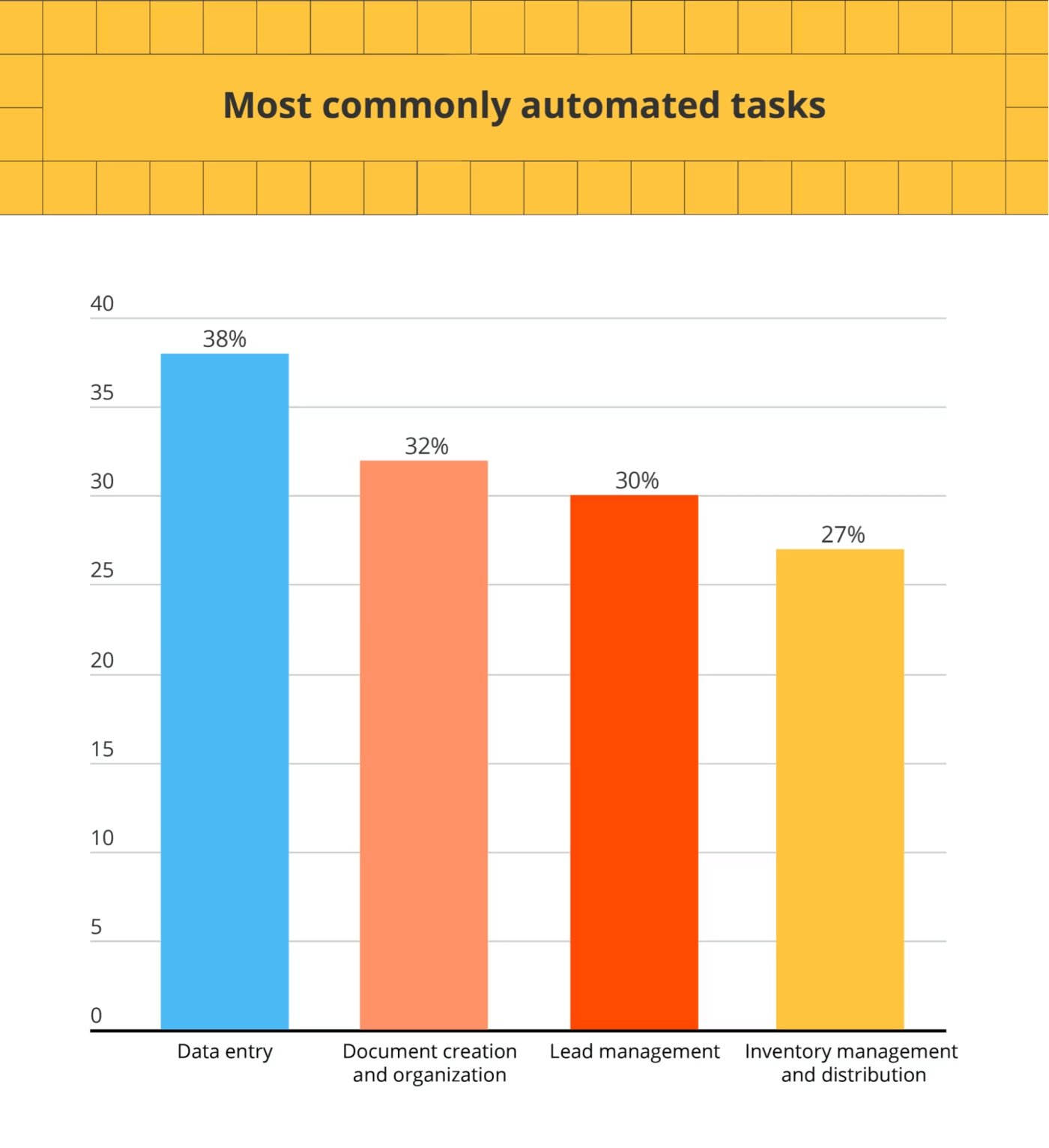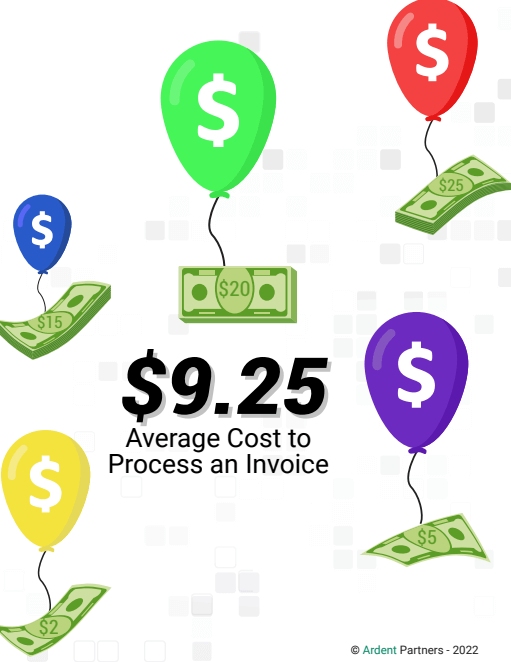What Is Accounts Payable Automation and How Can It Streamline Payments?
Traditional accounts payable (AP) operations are riddled with inefficiencies. Plowing through piles of paper invoices. Manually entering vast amounts of data into accounting systems. Checking (and double-checking) purchase orders to make sure you’re not missing a discrepancy.
You get the picture—traditional AP skyrockets your cost-per-invoice, hinders productivity, and leaves you at risk of critical errors.
In contrast, AP automation software automates everything from data capture to invoice matching, speeding up invoice payment times, eliminating errors, and reducing costs.
Let’s take a closer look at the two.
Traditional vs automated accounts payable process
The traditional and automated AP processes go through the same steps. Traditional AP, though, is completed manually, while automated accounts payable software uses AI, machine learning, workflow automation, and other cutting-edge technologies to automate the process.
A typical manual invoice process looks like this:
- A supplier/vendor submits a paper or digital invoice to your company requesting a payment.
- The invoice is assigned to the appropriate team member—typically hand-delivered or emailed.
- The team member manually inputs the invoice data (invoice number, payment due date, payment amount, etc.) into the accounting system.
- The employee cross-references the invoice with supporting documents to check for legitimacy and accuracy. This is called invoice matching.
- The invoice is approved and payment is made.
- The payment data is manually reconciled into your account books and archived in a physical file or computer file.
Free to use image sourced from Unsplash
Components of accounts payable automation
Here’s how accounts payable (AP) automation handles invoice processing.
Invoice capturing from various sources
In AP automation, invoice capturing is the practice of extracting key data from invoices across various sources and submitting it into an enterprise resource planning (ERP) system.
AP automation software automatically captures invoice data from siloed departments and systems—your accounting software, email, or sales systems, for example. It also captures invoice data for both paper and digital formats using Optical Character Recognition (OCR) technology.
Optical character recognition (OCR) data extraction
Optical Character Recognition (OCR) data extraction technology converts invoice documents into digital data. The technology scans and reads fixed template documents, such as handwritten invoices and PDF files, and converts them into editable, searchable text.
Invoice approval and workflow automation
Invoice approval is relatively straightforward. It involves reviewing and authorizing supplier invoices before payments are made. That said, workflow automation streamlines this process to make it more efficient and secure.
AP software lets you set customizable invoice approval rules. For example, who is authorized to approve, and for what suppliers/amounts? Which types of invoices should go through a multi-level approval process? Are there any special rules for sending cross-border payments?
Thanks to these rules, invoices from /solutions/cross-border-payments-solutions/different sources can be automatically routed to the right place. This means payments can be legitimized and approved faster and with fewer errors.
Invoice matching with purchase orders and documents
All invoices you receive need to be matched with supporting documents to verify their legitimacy and accuracy. So, invoices should be matched with your ERP’s purchase orders, product receipts, and other documents to uncover potential deviations.
AP software uses sophisticated algorithms to perform automated 3-way invoice matching. It can check invoice data such as line items, quantities, and prices against the data presented in purchase orders and receipts. Should it uncover any discrepancies, anomalies, or duplicates, they will be automatically flagged.
Automated invoice matching relies on the accuracy and accessibility of your business data. ERP systems can be an ideal solution, as you can integrate your accounting and supply chain data to make invoice matching more efficient.
For a comprehensive breakdown of ERP systems (including how to integrate them to minimize data transfer errors effectively), research what is ERP and understand how to implement them successfully.
Free to use image sourced from Unsplash
Vendor database maintenance and visibility
Your vendor database should contain all your supplier information: invoices, performance reports, purchase orders, contracts, and more. As well as assisting with invoice approvals and matching, vendor databases help you sustain positive vendor relationships, make cost-effective purchasing decisions, and remain compliant with regulations and policies.
By integrating your vendor information with your accounts payable software and ERP system, you can safeguard the real-time accuracy of vendor data across sources, minimizing the risk of invoicing errors.
KPI tracking through data analytics and reporting
A key feature of accounts payable (AP) automation is data analysis and reporting. AP automation can track metrics and KPIs that are hard to monitor manually and consolidate them into detailed reports.
AP automation tools track key accounts payable KPIs such as:
- Average accounts payable
- Days payable outstanding (DPO)
- Cost to process each invoice
- Average invoice approval rate
- Payment error rate
- Invoice exception rate
These KPIs provide finance teams with insights that can be used to optimize AP processes and drive cost-effective and strategic purchasing decisions, such as whether to implement real-time payments.
Invoice documentation storage and management
Instead of storing invoice documents in disorganized files on your computer—or worse, in a physical filing cabinet—AP automation enables you to store and manage documents in a centralized and secure electronic repository.
In addition, it may also be worth considering combining your AP automation with contract management software. This will facilitate e-signing and further automate your document management process. As a result, teams can easily access and monitor your contracts and invoice document statuses.
Benefits of automation in accounts payable processes
Is AP automation worth it? From reducing manual errors to speeding up payments, let’s discuss how automating accounts payable can help your business thrive.
Improves data accuracy and reduces manual entry errors
Data entry is the most commonly automated task for companies at 38%—and for good reason.
Image sourced from Zapier.com
Manual data entry is prone to human error. This is particularly dangerous in accounting, as data entry errors and miscalculations can lead to under/over payments, inaccurate financial records, lost vendor trust, and even legal implications.
AP automation instills confidence in data accuracy. It reduces manual data entry and, in turn, the risk of errors. As well as the automated extraction of data, AP automation software validates invoice data against ERP data to detect discrepancies and duplicates.
Lowers the risk of fraud and unauthorized transactions
Payment fraud is a persistent threat that 65% of companies were victims of in 2023, according to the most recent AFP Payments Fraud and Control Survey. AP automation supports fraud detection by implementing strict, multi-layered invoice approval rules and automating the detection of suspicious activity.
Speedier invoice processing and approval times
Manually processing and approving invoices takes time—often weeks, sometimes months. In fact, 57% of companies surveyed by Ardent Partners named lengthy invoice approval times as their biggest AP challenge.
Automation can significantly speed up invoice processing and approval times. Instead of weeks, invoices can reach ready-to-pay status in a matter of days—much to the delight of your suppliers.
Enhances invoice tracking and management
Manual invoicing processes are siloed, making them almost impossible to track and manage effectively. However, with a centralized platform, finance teams get full visibility and control of invoices as they travel from submission to approval and payment.
This is important because finance leaders need to be able to keep track of financial obligations. Payments must be made on time, and transactions must align with cash flow and budget. With centralized insight into the end-to-end AP process, finance leaders can guarantee timely payments, monitor spending and cash flow, and make better decisions.
Seamless integration with other financial systems
AP automation software is designed to seamlessly integrate with your core financial systems, databases, and ERP.
If you have international vendors, integrating AP automation with your global payouts platform means that approved payments can be sent to vendors with a click of a button. Guarantee that payments are sent in the correct currency via your supplier’s preferred payment method every single time.
Screenshot sourced from Rapyd
And, of course, integrating AP automation software with a cloud ERP system is a game-changer for data visibility and accessibility.
A cloud-based ERP stores your data in the cloud, meaning finance teams can securely view invoice data from anywhere in the world on any device. By creating seamless data flows across all of your financial systems, cloud ERP delivers real-time data insights that can be used to fuel pivotal business decisions.
Cuts down on labor needs and infrastructure costs
Manual invoice processes incur hidden costs that can be reduced by AP automation.
Firstly, you won’t need as many resources to support your invoicing process. So, you can cut down on labor and operational costs. You can also completely eliminate printing and postage fees as well as physical storage costs and other unnecessary overheads.
Plus, AP automation reduces the risk of duplicate payments, overpayments, late payments, and other costly implications.
It’s thanks to AP automation that the cost of processing an invoice has been on a steady decline. The previous Ardent Partners report put the current average to process an invoice at $9.25—a 15% drop from the previous year.
Image sourced from TungstenNetwork.com
Strengthens vendor monitoring and coordination
Continuous vendor monitoring allows you to stay updated on your vendor’s activities and evaluate them for their performance, reliability, price, risk, and other factors. With so much information to collect and analyze, vendor management can quickly become messy and ineffective.
Using automation, you can store and manage vendor data in a centralized location, giving you immediate access to the information you need. Seamless integrations help make sure that all of your data is accurate, and AI-driven matching protects you against suspicious activity.
Wrapping up
By using automation to process invoices quickly and accurately, you streamline your operations, reduce invoicing costs, and reliably maintain positive vendor relationships. But accounts payable (AP) automation doesn’t just speed up your payments—it fuels the improvement of your entire financial and operational landscape.
With powerful integrations and metrics, you can create seamless data flows that offer the insights you need to make smarter financial business decisions. Get a real-time view of your invoicing performance as well as cash flow, budget, expenses, and more.










